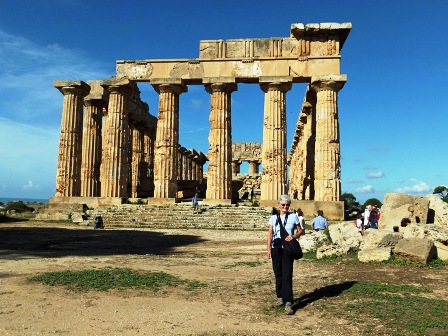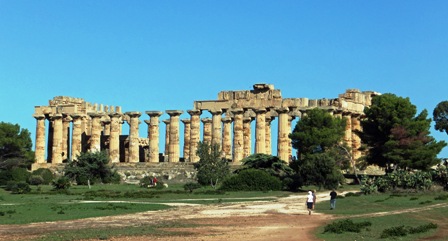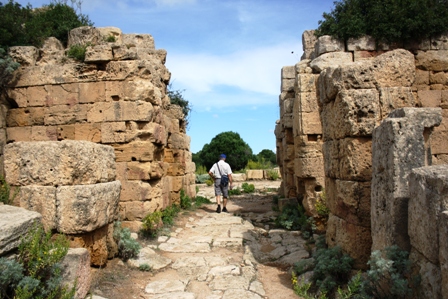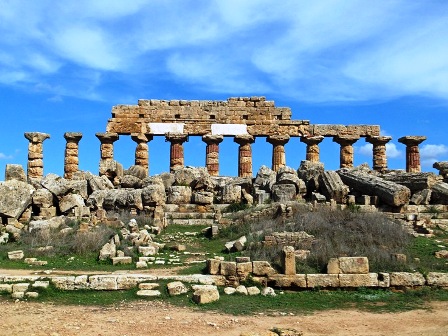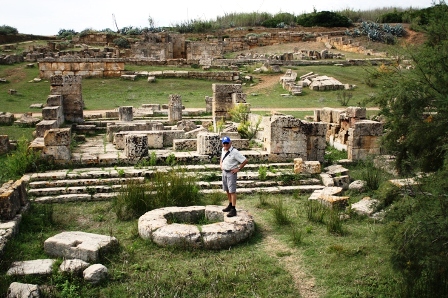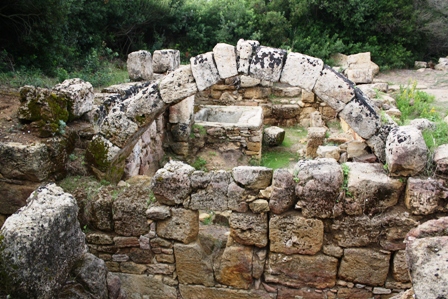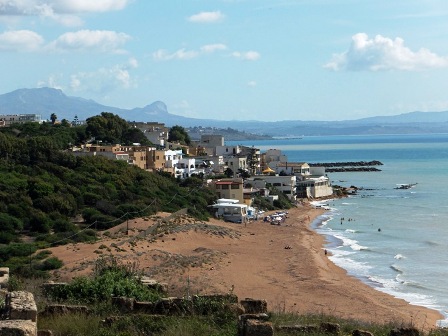|
Selinunte, Sicily My brother-in-law traces his family to an ancestor who went over the Alps with Hannibal. It appears that Hannibal was a ruthless tyrant in Sicily. He is credited with the first great destruction of Selinunte. After winning the battle with the loss of 16000 lives and 5000 taken prisoner, he exacted a large payment from the Selinute survivors with the understanding that the sacred temple area would be saved. Hannibal collected the ransom, then sacked the city and pulled down the temple walls anyway. Selinunte was founded in the 7th C BC, rebuilt after the departure of Hannibal, sacked again in 250 BC and finally utterly destroyed by later earthquakes. There was some Arab occupation of the site in later centuries but no record of people living there exists after the 13th C. Some of the ruins were mentioned in articles written in the 16th C but it wasn’t until the late 19th C, that serious work was done to rebuild some of the original walls and temples. Although much of the site remains a pile of organized rubble, it is the largest archaeological site in Europe, impressive and compelling.
We spent a sunny morning exploring the three main areas of the site. The Eastern temples are built on a hill next to Marinella di Selinunte, where we were staying. Little is known about the deities worshipped in the temples so they are labelled simply by letter. Temple F, dating from the 5thC BC, is the first one you see and it was rebuilt in 1958. Similar in style to Segesta, the rectangle of huge columns are as arresting now as they must have been to the people of Selinunte. We scrambled over the huge blocks of stone that once formed two more temples side by side next to Temple F. I began to think of the city as Lizardville as everywhere I stepped I disturbed a small lizard sunning on one of the temple blocks.
Knowing there was about 500M between each section of the Selinunte, we had driven to the Eastern section and then drove to the Acropolis group on the top of another hill farther west. The Acropolis area included five other temples and the main town, laid out in a classical manner with three main roads and a grid of smaller streets. The first thing you notice is the huge temple standing like a sentinel at the top of the hill. We circled the temple to walk down the central broad avenue lined with shops to the north gate of the city built in the middle of huge fortified walls, constructed after the second sacking by the Carthaginians in 409 BC. Beyond the gate were the remains of more of the city spreading both northwards and to the west.
It was about a 20 minute walk through pleasant pastureland to get to the Western section of Selinunte. Here we found the ruins of more homes and a small temple area dedicated to Demeter Malophoros, the same goddess for whom our B&B in town was named. There is a large painted ceramic picture of Demeter holding a pomegranate on the front of our B&B. I had to investigate the legend of Demeter. I found out that Demeter was the goddess of agriculture, grain and bread, very important commodities in Sicily. She and her daughter Persephone commanded an immensely popular cult in Sicily. According to the legends, Hades, the king of the Underworld, kidnapped Persephone and imprisoned her intending that she would be his bride. Persephone vowed to starve herself as it was believed if a prisoner in the Underworld ate anything, they would have to remain there forever. Persephone finally relented when offered a pomegranate and ate six seeds. Demeter, her mother grieved so deeply for her daughter that the earth was scorched and nothing grew. Zeus feared that the people on earth would die without food so a compromise was reached. Persephone was allowed to return to earth for six months, starting in the spring each year, ensuring a full fertile growing season, before returning to the Underworld for the dormant winter months. Thus we have the explanation of the seasons. It was time for a late lunch when we finished our exploration of the Selinunte site. A small restaurant facing the beach and the small fisherman’s marina in Marinella was the perfect spot for a Panini and a gelato for dessert.
There is a long sandy beach stretching west from the village that looked very inviting in the morning. By the afternoon the clouds had gathered and the wind had picked up. We decided swimming would wait for another day. We never got the threatened rain. The skies cleared and it was time for dinner. We picked a restaurant recommended in Sicily Rough Guide. Africa da Bruno, a family run operation. It had a great, inexpensive antipasto buffet and good pasta for us. The favourite for most diners was the wood fired pizza, being prepared by the chef in front of us. He expertly tossed each ball of pizza dough in flour and twirled it until it was a thin circle. The toppings were added and the pizza was slid onto a long handled paddle and placed in the hot oven. Judging from the lack of leftovers, it was delicious. I am not a big fan of pizza but I might change my mind if one is offered like the Africa da Bruno pizza
|
||||||||
